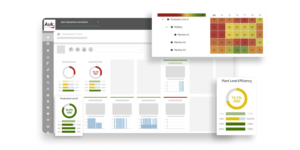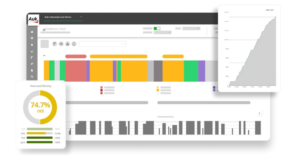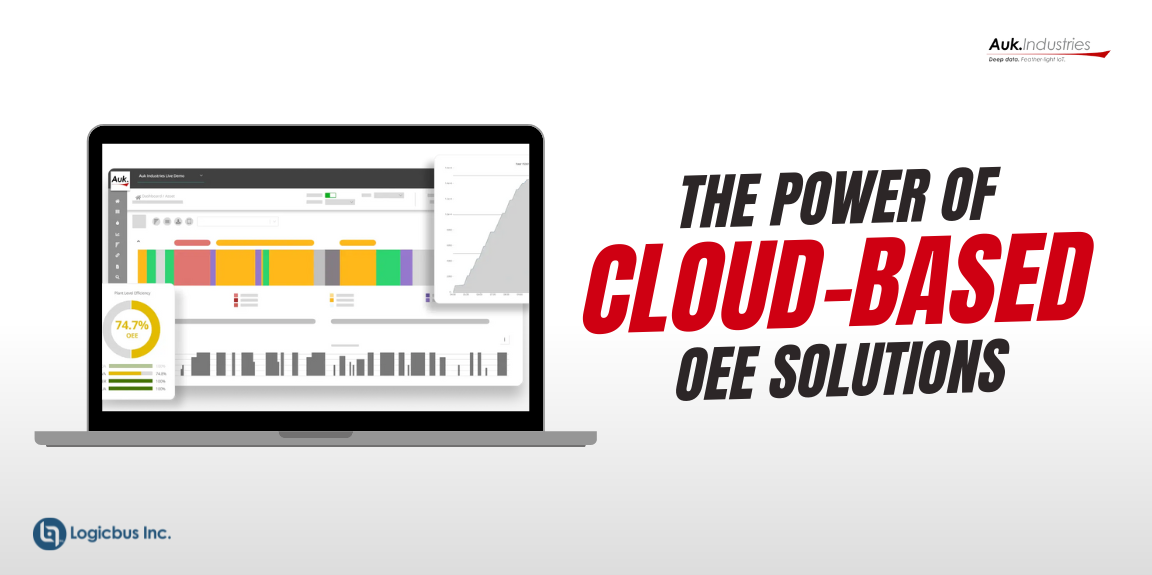Manufacturers are always on the lookout for effective and sustainable ways to reduce costs and increase bottom-line gains. Lean manufacturing methodologies like Overall Equipment Effectiveness (OEE) continue to help manufacturers improve productivity.
With shorter product lifecycles, tighter margins and growing consumer demand, however, manufacturers face new challenges in finding real-time and scalable production monitoring solutions which can be seamlessly implemented across different manufacturing assets. Amidst the different digital transformation solutions available, Cloud-based OEE solutions are picking up the pace to turn data into actionable information.

1. Real-time OEE visibility
Cloud-based OEE solutions allow the KPI, availability, quality and performance losses of each equipment and production line to be accessed anywhere, anytime, from any device. Best practices can be easily communicated in real-time to the production floor whereas problems can be rapidly discovered and troubleshot by the right employees.
Real-time OEE visibility is especially crucial for organisations with production plants across geographies. With differences in languages and culture, manual collection and consolidation of data may be difficult, inefficient and inaccurate. With cloud-based OEE, however, latency in data integration can be greatly reduced and organisations stand to benefit from monitoring the performance of each production plant in real-time.
”Additionally, the real-time data serves as a single source of truth for all employees, minimising discrepancies and allowing for more prudent business decisions to be made by both operators and executives”
2. Low costs involved
Unlike on-premise deployments, cloud-based OEE solutions require significantly less upfront capital investments. Without the need to purchase perpetual software licenses and additional costs from IT infrastructure setup, cloud-based OEE solutions come at a fraction of the cost and still provide organisations with the same suite of services and benefits as on-premise deployments.
Furthermore, the maintenance of the relevant software is often provided by the service provider at affordable rates. This removes the need for an in-house IT team, greatly reducing the cost of software ownership.
3. Quick implementation
Cloud-based OEE solutions can be rapidly deployed within days or weeks since minimal installation works are required. Most cloud-based OEE solutions only require integration to several key data sources before the system is up and running. With a shorter implement time, organisations can start using the software as soon as possible.
“Auk Industries’ plug-and-play industrial IIoT system can be deployed within minutes. It is significantly faster than other on-premise deployments which have lead-time ranging from months to years.”
By reducing the lead-time, the operations team can start identifying gaps and improve OEE as soon as possible!

4. High scalability
Many cloud-based OEE solutions are charged on a subscription basis, based on the size of the organisation. As the manufacturing capacity grows, organisations have the flexibility to upgrade to a better plan (e.g. higher computing power, memory and storage provided). The scaling of cloud-based OEE solutions has little downtime so there is little to worry about prolonged delays.
By shifting OEE monitoring to the cloud, organisations are empowered with accurate, real-time data to improve OEE and drive performance. Regardless of the scale and geographies of the manufacturing facilities, cloud-based OEE solutions provide simplification and ease for employees and executives to monitor, analyse and optimise production.
sales@logicbus.com | support@logicbus.com | +1 619 616 7350 | Start conversation





